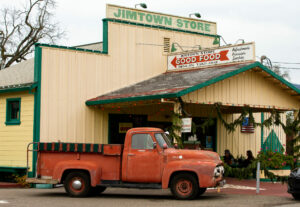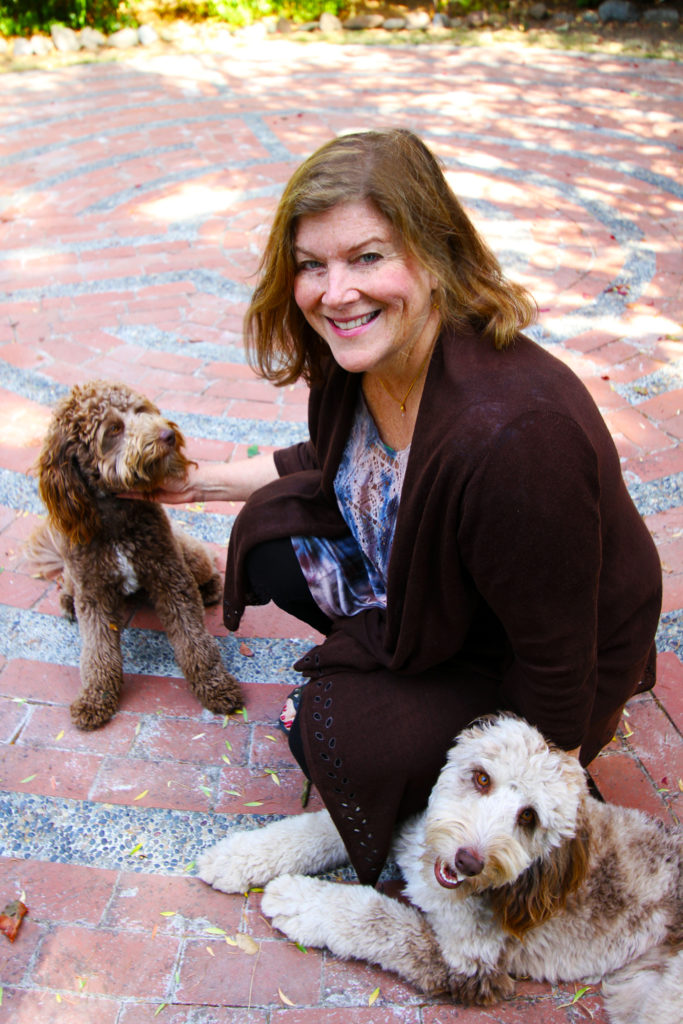
Standing at the entrance to the 22-foot labyrinth in Lea Goode-Harris’ backyard, all she’ll say is that there is no right way to enter.
There is also no wrong way, apparently. But somehow knowing there are no rules adds even more weight to the first step; increases the pressure to perform some quiet ritual, maybe a dance of some sort. I look toward her, watching me with anticipation.
“I’m not going to say anything until you’ve experienced it,” says the world-renowned labyrinth designer who makes her home in Santa Rosa’s JC neighborhood. “Your first walk is really precious, because you don’t know what to expect,” says Goode-Harris, who has created at least 100 meditative pathways that include the Snoopy Labyrinth at the Charles Schulz Museum, The Sebastopol Labyrinth of Life, two labyrinths at the Center for Spiritual Living along with many private and temporary labyrinths throughout the county.
But her most well-known labyrinth is the Santa Rosa Labyrinth, a unique labyrinth design which she created by accident in 1997. Inspired by walks at the Angela Center (a Santa Rosa retreat) and at San Francisco’s Grace Cathedral, Goode-Harris, who was an art therapist working toward her doctorate in psychology, began sketching mandalas (sacred circles with clear geometric designs) for inspiration. Those turned into compass-drawn concentric circles, and Goode-Harris says one day the pattern just “sort of rose up” from the paper. Not all at once, but over several days of picking up her pad and pencil, she refined the design until it became the seven-circle labyrinth was complete. The design was verified as unique (though it shares aspects with an 11th century labyrinth), and copyrighted. Thus, the Santa Rosa Labyrinth–named for her hometown–was born. She keeps the original sketch to show visitors. “The maze became my dissertation,” says Goode-Harris, who finally earned a PhD after writing about the psychology of labyrinths.
Over the years she’s built and rebuilt the version of the Santa Rosa Labyrinth in her yard, first in grass, then in brick, and finally in very concrete. Santa Rosa Labyrinths have been built in Washington DC at the American Psychological Association, Standing Bear Native American Park in Oklahoma and worldwide.
I decide a deep breath and a purposeful step forward into the curling path of the labyrinth ahead of me. Cutting through with my toe, then my torso and finally pushing into the eight concentric circles, the space inside seems weightier. While Goode watches my progress I try to tune out the world and follow the winding bricks that first curve wide the circle back on itself like a winding mountain road. Unlike a maze there are no high walls, dead ends or false paths to trick you.
“It’s a visceral experience between conscious and unconscious,” says Goode-Harris. Labyrinths are typically low or flat to the ground, and have a single path leading to the center, the point of which is meditative and contemplative rather than merely cerebral.
No one knows exactly who drew the first labyrinth, but they seem to span most of modern history and cultures as far-flung as the North American Hopi and ancient Minoan, reach geographically from India to northern Russia. One of the most famous is the labyrinth at Chartres Cathedral in Paris, a similar version of which is inside Grace Cathedral.Want to experience a labyrinth yourself? Here’s where to find some locally…
– Snoopy Labyrinth at the Charles M. Schulz Museum, 2301 Hardies Lane, Santa Rosa.
– Center for Spiritual Living, 2075 Occidental Road Santa Rosa.
– Christ Church United Methodist Church, 1717 Yulupa Avenue Santa Rosa
– Oak Hill Park, Petaluma
– Kaiser Medical Clinic Stein Building, 3975 Old Redwood Highway, Santa Rosa
“Labyrinths are a tool to listen to ourselves. They aren’t magic, but an archetypical design that slows us down to listen to ourselves for prayer, meditation or creative thinking. It’s about what is important to you and it allows you to get in touch with that,” she said.
One of the most unique aspects of this particular pathway a small open space half-way between the opening and the center, which Goode-Harris calls the “heart space”. The quiet, empty spot is often filled with small offerings, flowers or a candle. Sometimes not.

Reaching the center of the labyrinth, it seems appropriate to stop. Some people, says Goode, just walk across the circles and are done. Others retrace the route to the start. With the Santa Rosa Labyrinth, you can shortcut the exit by taking a wide step onto the heart space and then to the entrance.
“It still surprises me. I know the pattern so well I can just walk it with my eyes closed,” she says. Like many who use a labyrinth as a way to meditate, it seems to be the perfect distance to sort out whatever’s on your mind.
Re-walking the labyrinth, Goode-Harris starts a few seconds behind me. The parallel geometry of the paths bring us together in spots, move us to opposite sides and back together. Clearly it’s a metaphor. “Muslims, Jews, Christians can all walk it. We’re all on the same path. We just see it from a different viewpoint,” she says.
There is no right or wrong way to experience a labyrinth, Goode-Harris reminds me, as I ponder which path to follow out of the labyrinth. Carefully, thoughtfully I make my way out the same way I went in as one of Goode-Harris’ friends jumps back and forth between the lines, teasing me — the one who can’t bear to step outside the path. Finally stepping out of the maze, its clear there is no right or wrong path. Whatever the route, the journey through a labyrinth is truly the destination.
You can find out more about Lea Goode-Harris including how to make your own labyrinth at srlabyrinthfoundation.com.










